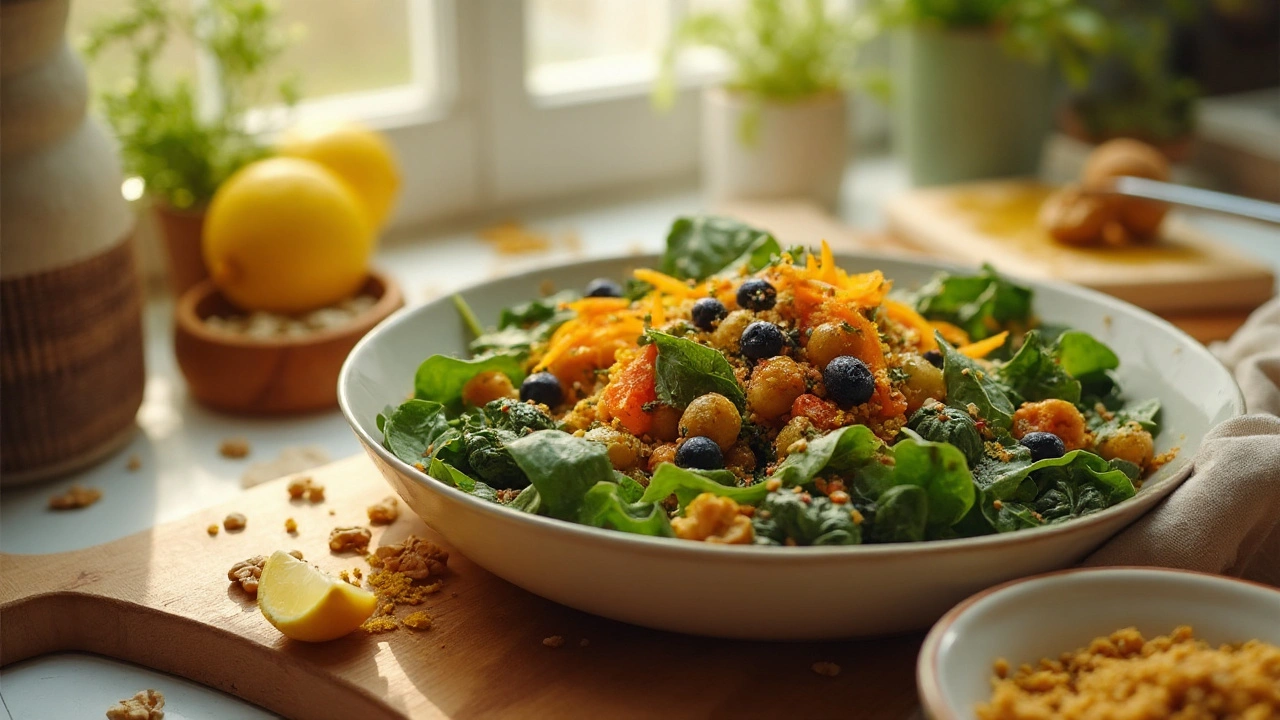Anti-Inflammatory Diet: What It Is and Why It Matters
Feeling achy after a long day? Your plate might be part of the problem. An anti-inflammatory diet focuses on foods that calm the body’s fire response, helping you feel less sore, sleep better, and keep your weight in check.
Instead of counting calories, you tune into how ingredients affect inflammation. The goal isn’t a strict regimen; it’s a flexible way of eating that fits your life while giving your cells the nutrients they need to stay calm.
Key Foods to Include
Here’s a quick shopping list that keeps the flame low:
- Fatty fish – salmon, mackerel, sardines bring omega‑3s that jump on inflammation’s trail.
- Leafy greens – kale, spinach, and Swiss chard are packed with antioxidants.
- Berries – strawberries, blueberries, and raspberries have natural polyphenols.
- Nuts & seeds – almonds, walnuts, chia, and flaxseed add healthy fats and fiber.
- Olive oil – extra‑virgin versions provide oleocanthal, a natural anti‑pain agent.
- Whole grains – brown rice, quinoa, and oats offer steady energy without spikes that can trigger inflammation.
Try to limit processed snacks, sugary drinks, and red meat, because they tend to fuel the fire. swapping a soda for sparkling water with a splash of lemon can make a big difference.
Simple Meal Ideas & Tips
Putting the right foods together doesn’t have to be fancy. Start your day with oatmeal topped with blueberries and a handful of walnuts. That combo gives fiber, antioxidants, and omega‑3s in under five minutes.
For lunch, toss a salad of mixed greens, grilled salmon, sliced avocado, and a drizzle of olive oil. Throw in some chickpeas for extra protein and stay satisfied until dinner.
Dinner can be as easy as a one‑pan stir‑fry: sauté broccoli, bell peppers, and snap peas in olive oil, add tofu or shrimp, and finish with a splash of low‑sodium soy sauce. Serve over quinoa for a complete meal.
Snack smart. Keep a small container of mixed nuts at your desk, or slice an apple and pair it with a spoonful of almond butter. These options keep blood sugar steady and prevent cravings for junk food.
Hydration matters too. Aim for eight glasses of water a day, and consider green tea for its extra anti‑inflammatory compounds.
When you shop, stick to the perimeter of the grocery store where fresh items live, and read labels to avoid hidden sugars and unhealthy fats. Small choices add up, and you’ll notice less joint stiffness and better energy within weeks.
Ready to give it a try? Pick three foods from the list above and add them to your meals this week. Notice how you feel, and adjust as you go. An anti-inflammatory diet is a lifestyle tweak, not a strict rule, so keep it simple and enjoy the taste of feeling better.
Top 10 Anti-Inflammatory Foods to Boost Your Health
Discover the ten most powerful anti-inflammatory foods, why they matter, and practical ways to add them to your meals for lasting health benefits.

